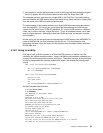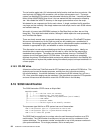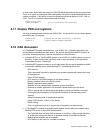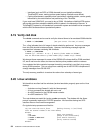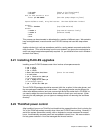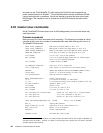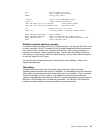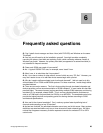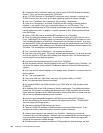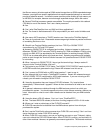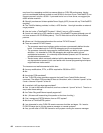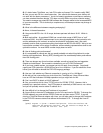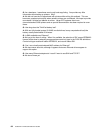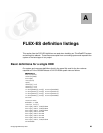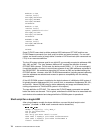
© Copyright IBM Corp. 2001 63
Chapter 6. Frequently asked questions
Q: Can I install a boot manager and have Linux (with FLEX-ES) and Windows on the same
ThinkPad?
A: Yes, but you will need to do the installation yourself. You might consider completely
removing the primary hard disk and replacing it with a disk containing whatever version of
Windows you prefer. However, the primary hard disk (as opposed to a second hard disk) is
not intended for frequent removal.
Q: Does each S/390 user need a Linux userid?
A: No. A typical OS/390 TSO user, for example, never “sees” Linux.
Q: Must I use vi to administer the Linux system?
A: No. Linux has a number of other editors, some of which are very “PC-like.” However, you
may find it easier to use vi to edit files whose names begin with a period.
Q: Why do I need to define emulated control units and channels? I did not need to do this
with emulated I/O on P/390 and MP3000 systems. For these machines, I could simply define
emulated devices.
A: There are two major reasons. The first is that working through (emulated) channels and
devices provides a more accurate emulation of S/390 hardware. In most cases this has little
practical effect. The second reason involves emulating multiple S/390 instances, and sharing
emulated I/O--for example, shared DASD. This is a more complex situation that does not
exist on a P/390 and is not permitted (via LPARs) on an MP3000. The emulated control units
provide the logical interlock and queueing points for sharing devices according to S/390
architectural specifications.
Q: How real is the channel emulation? Can I make my system faster by defining lots of
channels and spreading out my I/O devices?
A: As best we could tell, the emulated channels are not very real in this sense. Many system
definitions we examined define only two or three channels of each channel type. We have
noticed that it appears necessary to define separate channels for emulated 3174 or 3274
control units.
6



